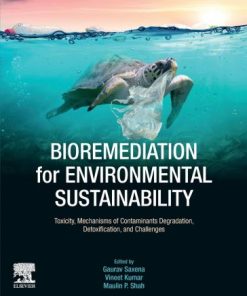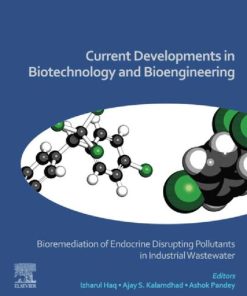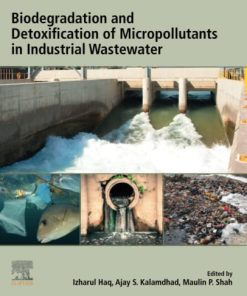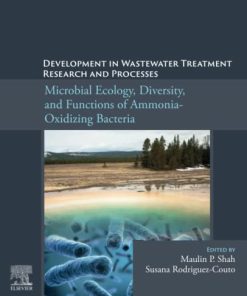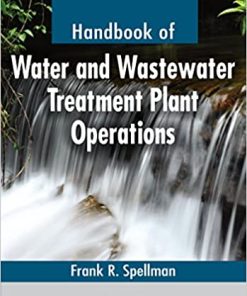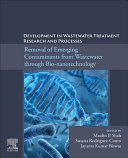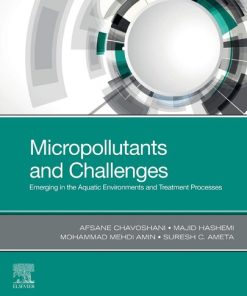Biodegradation and Detoxification of Micropollutants in Industrial Wastewater 1st edition by Izharul Haq, Ajay Kalamdhad, Maulin Shah 0323907091 9780323907095
$50.00 Original price was: $50.00.$25.00Current price is: $25.00.
Biodegradation and Detoxification of Micropollutants in Industrial Wastewater 1st edition by Izharul Haq, Ajay S. Kalamdhad, Maulin P. Shah – Ebook PDF Instant Download/DeliveryISBN: 0323907091 9780323907095
Full download Biodegradation and Detoxification of Micropollutants in Industrial Wastewater 1st edition after payment.
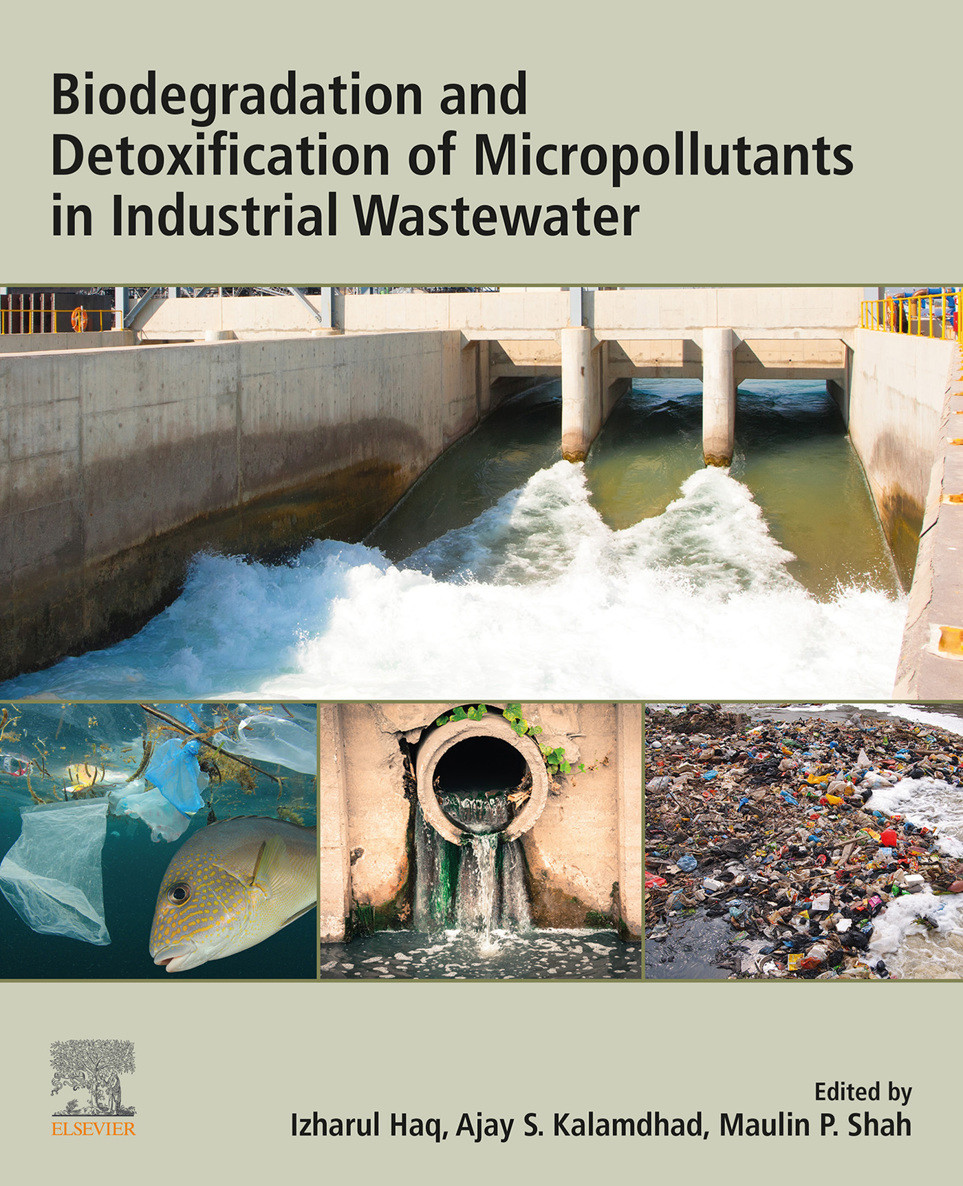
Product details:
ISBN-10 : 0323907091
ISBN-13 : 9780323907095
Author : Izharul Haq, Ajay S. Kalamdhad, Maulin P. Shah
Biodegradation and Detoxification of Micropollutants in Industrial Wastewater summarizes the occurrence and source of micropollutants through various industrial wastewaters. It covers the type of micropollutants, their effects, and emerging detection and treatment methods. The book has 11 chapters, and throughout each chapter, it presents the fate and effects of micropollutants, quantitative and qualitative analysis of micropollutants in industrial wastewaters, and treatment of micropollutants through conventional and advanced wastewater treatment technologies.
Biodegradation and Detoxification of Micropollutants in Industrial Wastewater 1st Table of contents:
Chapter 1 Evaluation of micro-pollutants removal from industrial wastewater using conventional and advanced biological treatment processes
1.1 Introduction
1.2 Types of micro-pollutants (MPs) in industrial wastewaters and their toxic health effects
1.3 Conventional biological treatment
1.4 Advanced biological treatment
1.5 Pros and cons of biological treatment process on MPs removal over conventional ones
1.6 Future aspects of BWWTPs of large-scale MPs remediation
1.7 Conclusion
References
Chapter 2 Fate and occurrence of micro- and nano-plastic pollution in industrial wastewater
2.1 Introduction
2.2 Micro- and nano-plastics in the environment
2.3 Structural difference between micro- and nano-plastics
2.4 Characterisation of micro- and nano-plastics
2.5 Techniques used for characterization of micro- and nano-plastics from wastewater
2.6 Health hazards of microplastics and nanoplastics
2.7 Impact of micro- and nano-plastics in industrial wastewater
2.8 Conclusions
Acknowledgements
References
Chapter 3 Biosensors as an effective tool for detection of emerging water and wastewater pollutants
3.1 Introduction
3.2 Conventional methods of pollutants’ detection in wastewater
3.3 Biosensors
3.4 Advantages of biosensors over conventional detection methods
3.5 Nanotechnology for biosensors
3.6 Conclusions
References
Chapter 4 Removal of organic micro-pollutants by aerobic and anaerobic microorganism
4.1 Introduction
4.2 Organic micropollutants
4.3 Effect of organic micropollutants on the environments
4.4 Different methods for the removal of organic micropollutants
4.5 Aerobic and anaerobic microorganism for the removal of micropollutants
4.6 Limitations and future prospects
4.7 Conclusions
References
Chapter 5 Emerging dye contaminants of industrial origin and their enzyme-assisted biodegradation
5.1 Introduction
5.2 Enzymes for dye degradation
5.3 Immobilized enzymes
5.4 Conclusions and future prospects
References
Chapter 6 An overview on the application of constructed wetlands for the treatment of metallic wastewater
6.1 Introduction
6.2 Sources of metal pollution and its environmental implications
6.3 Environmental impacts
6.4 Treatment of metal-laden industrial wastewater
6.5 Constructed wetlands for heavy metal removal
6.6 Conclusions
References
Chapter 7 A glance over current status of waste management and landfills across the globe: A review
7.1 Introduction
7.2 Global scenario of landfilling
7.3 Indian scenario of landfilling
7.4 Land requirement for dumpsites
7.5 MSWM in developed and emerging countries: a comparative analysis
7.6 Conclusions
References
Chapter 8 Micro and nanoplastic toxicity on aquatic life: fate, effect and remediation strategy
8.1 Introduction
8.2 Extensive use of plastic in our daily life
8.3 Characterizations of MPs and NPs
8.4 Environmental behavior and fate of MPs and NPs
8.5 Impact of MPs and NPs on aquatic life ecosystem
8.6 Remediation of MPs and NPs from the aquatic system
8.7 Conclusion
References
Chapter 9 Endocrine-disrupting pollutants in domestic and industrial wastewater: occurrence and removal by advanced treatment system for wastewater reuse
9.1 Introduction
9.2 Sources, fate, and interaction of EDCs with biota
9.3 Removal of EDCs via physical and chemical treatment
9.4 Nanomaterial assisted removal of EDCs
9.5 Polymer-based removal of EDCs
9.6 EDC bioremediation technologies
9.7 Conclusion and recommendation
Conflict of interest disclosures
Funding
Acknowledgments
References
Chapter 10 Use of microalgae for the removal of emerging contaminants from wastewater
10.1 Introduction
10.2 Microalgae-based mechanism for degradation of pollutants
10.3 Removal strategies in micro algae based treatment systems
10.4 Combined systems
10.5 Removal efficiency of various emerging contaminants by microalgae
10.6 Biomass separation
10.7 Harvesting of algal biomass
10.8 Necessity of pre and post treatment of micro algae
10.9 Conclusion
References
Chapter 11 Bioaugmentation as a strategy for the removal of emerging pollutants from wastewater
11.1 Introduction to bioremediation
11.2 Current bioremediation methods and their limitations
11.3 Nanoparticles for Bioaugmentation: Nanobioaugmentation
11.4 Current technological barriers in using nanoparticles
11.5 Future prospective and conclusion
People also search for Biodegradation and Detoxification of Micropollutants in Industrial Wastewater 1st:
detoxification in biodegradation
biodegradation of micropollutants
detoxification and degradation
detoxification microbes
biodegradation organic micropollutants
Tags:
Biodegradation,Detoxification,Micropollutants,Industrial Wastewater,Izharul Haq,Izharul Haq,Ajay Kalamdhad,Maulin Shah
You may also like…
Politics & Philosophy - Anthropology
Disenfranchised: The Rise and Fall of Industrial Citizenship in China Joel Andreas
Technique - Water Treatment
Valorization of Microalgal Biomass and Wastewater Treatment 1st edition
Technique - Water Treatment
Biodegradation and Detoxification of Micropollutants in Industrial Wastewater 1st Edition
Technique - Water Treatment
Uncategorized
Engineering





